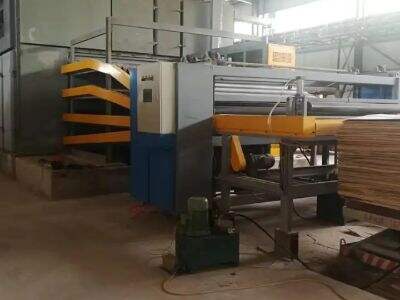When it comes to drying veneer in your wood factory, you want to find the best equipment to do the job both faster and better. Drying There are two types of machine options for wet veneer: roller veneer dryer, mesh veneer dryer. Both dryers offer their own set of benefits and drawbacks, which are important to know in order to make an informed choice for your factory.
How roller and mesh veneer dryers are different:
Roller veneer dryers only dry the wood as it goes through the machine and is exposed to hot rollers. The roller turns and the veneer is dried from both sides. In contrast, mesh line veneer dryers convey the veneers through the drying procedure via a mesh transporter belt. Hot air is circulated through the mesh and the veneer dried as it travels on the conveyor.
Efficiency and Productivity Comparison of Roller and Mesh Veneer Drying:
As far as efficiency is concerned, RVDs are famous for it’s quick drying & high productivity rates. The uniform heat distribution over the rollers will make the veneer dried, evenly and faster. But mesh veneer dryers, too, are performance machines in that the mesh conveyor can handle the endways flow of veneer as it drying stream.
Roller Veneer Dryer Roller veneer dryers are popular for production as they can process at a high speed. The rotating rollers also enable the adjacent veneer layers to be dried at a uniform rate, thereby allowing a greater quantity of dried veneer to be produced in a shorter time period. Although mesh veneer dryers are slower than roller dryers, they are very effective at drying in large volumes of veneers.
Roller Dryers or Mesh Dryers: Which one to pick:
When comparing roller and mesh veneer dryers for your plant, it’s important to evaluate your goals and individual needs. If you need sheer speed and high throughput, a roller veneer dryer may be ideal for your application. But if you need pliability, a mesh face dryer might spark your interest for your factory.
Optimising quality and production with the right type of veneer dryer:
Whether you go with a roller or a mesh veneer dryer, it's important to get the most out of your dried veneer. The drying apparatus must be maintained and cleaned on a regular basis to insure the proper drying of the veneer as well as the elimination of defects. Also, closely checking the drying and adjusting the settings as required will improve quality and yield of the dried veneer.
Considering the efficiency of roller vs mesh veneer dryers for your mill:
With regard to economic viability, there are advantages to both roller and mesh veneer dryers. Although roller veneer dryers come with a higher investment cost, their efficiency and output capacity could result in financial savings in the long-run. Mesh vein dryers can be less expensive upfront, but they can also require more maintenance and repairs, which could result in higher costs of operation over time.
In summary The decision to buy china plywood face veneer dryer machine for your factory is an important decision and one that must be tailored to your specific needs and objectives. Each kind of dryer has its own positives and negatives, it's important to consider the advantages and disadvantages of both before making your decision. By clarifying the advantages between roller and mesh veneer dryers, comparing the efficiency and productivity, and reviewing the thoughputs, qualities, and cost performance, you can choose the best-suited veneer drying unit for your factory. We design a variety of high performance veneer drying machines at XIANGYING to fit your drying demands, and get the most out of your factory.
Table of Contents
- How roller and mesh veneer dryers are different:
- Efficiency and Productivity Comparison of Roller and Mesh Veneer Drying:
- Roller Dryers or Mesh Dryers: Which one to pick:
- Optimising quality and production with the right type of veneer dryer:
- Considering the efficiency of roller vs mesh veneer dryers for your mill:

 EN
EN
 AR
AR
 FR
FR
 DE
DE
 HI
HI
 RU
RU
 ES
ES
 TL
TL
 ID
ID
 UK
UK
 VI
VI
 TH
TH
 TR
TR
 MS
MS
 KA
KA
 BN
BN
 LO
LO
 MY
MY
 KK
KK
